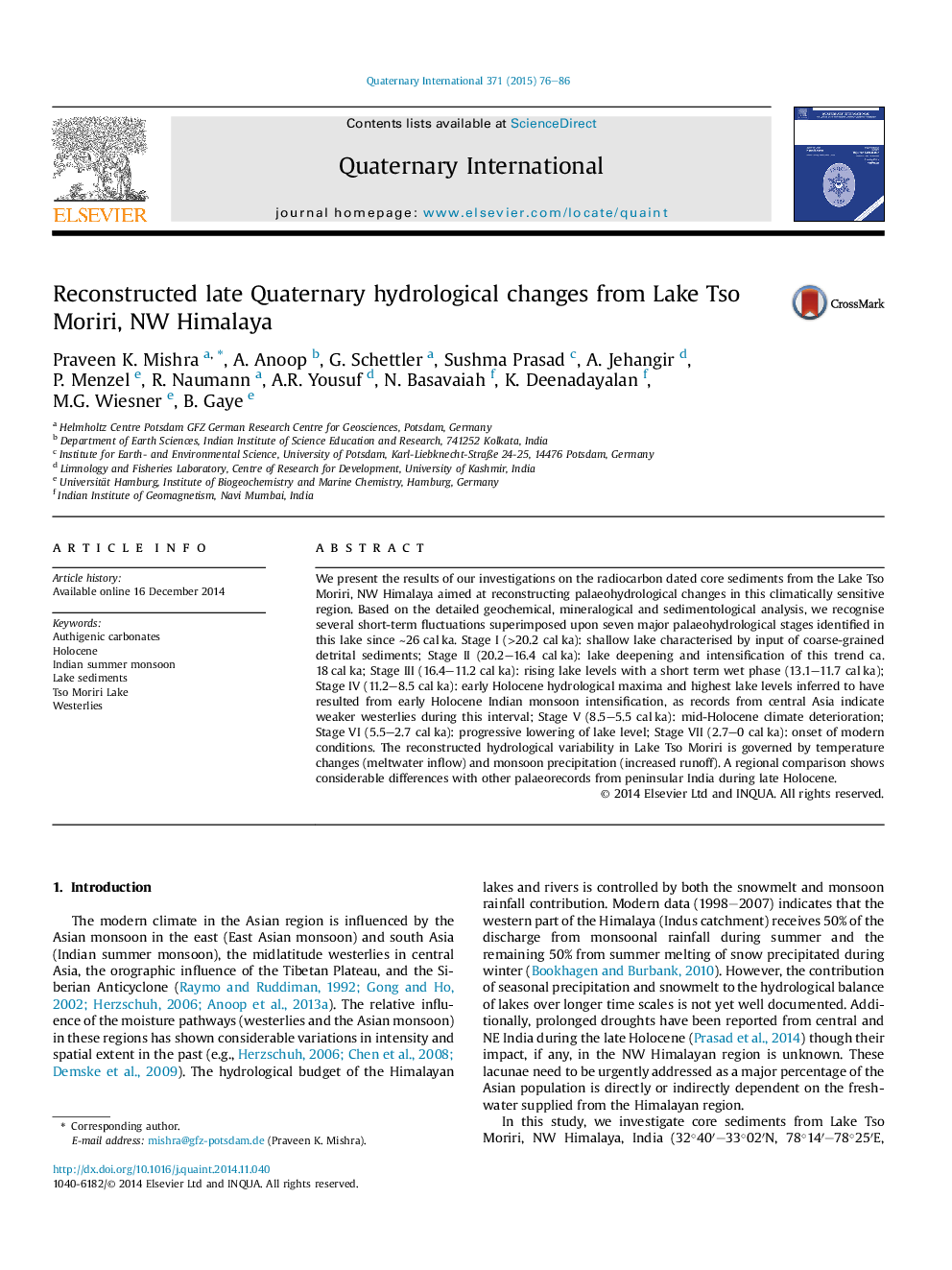| Article ID | Journal | Published Year | Pages | File Type |
|---|---|---|---|---|
| 1040780 | Quaternary International | 2015 | 11 Pages |
We present the results of our investigations on the radiocarbon dated core sediments from the Lake Tso Moriri, NW Himalaya aimed at reconstructing palaeohydrological changes in this climatically sensitive region. Based on the detailed geochemical, mineralogical and sedimentological analysis, we recognise several short-term fluctuations superimposed upon seven major palaeohydrological stages identified in this lake since ∼26 cal ka. Stage I (>20.2 cal ka): shallow lake characterised by input of coarse-grained detrital sediments; Stage II (20.2–16.4 cal ka): lake deepening and intensification of this trend ca. 18 cal ka; Stage III (16.4–11.2 cal ka): rising lake levels with a short term wet phase (13.1–11.7 cal ka); Stage IV (11.2–8.5 cal ka): early Holocene hydrological maxima and highest lake levels inferred to have resulted from early Holocene Indian monsoon intensification, as records from central Asia indicate weaker westerlies during this interval; Stage V (8.5–5.5 cal ka): mid-Holocene climate deterioration; Stage VI (5.5–2.7 cal ka): progressive lowering of lake level; Stage VII (2.7–0 cal ka): onset of modern conditions. The reconstructed hydrological variability in Lake Tso Moriri is governed by temperature changes (meltwater inflow) and monsoon precipitation (increased runoff). A regional comparison shows considerable differences with other palaeorecords from peninsular India during late Holocene.
